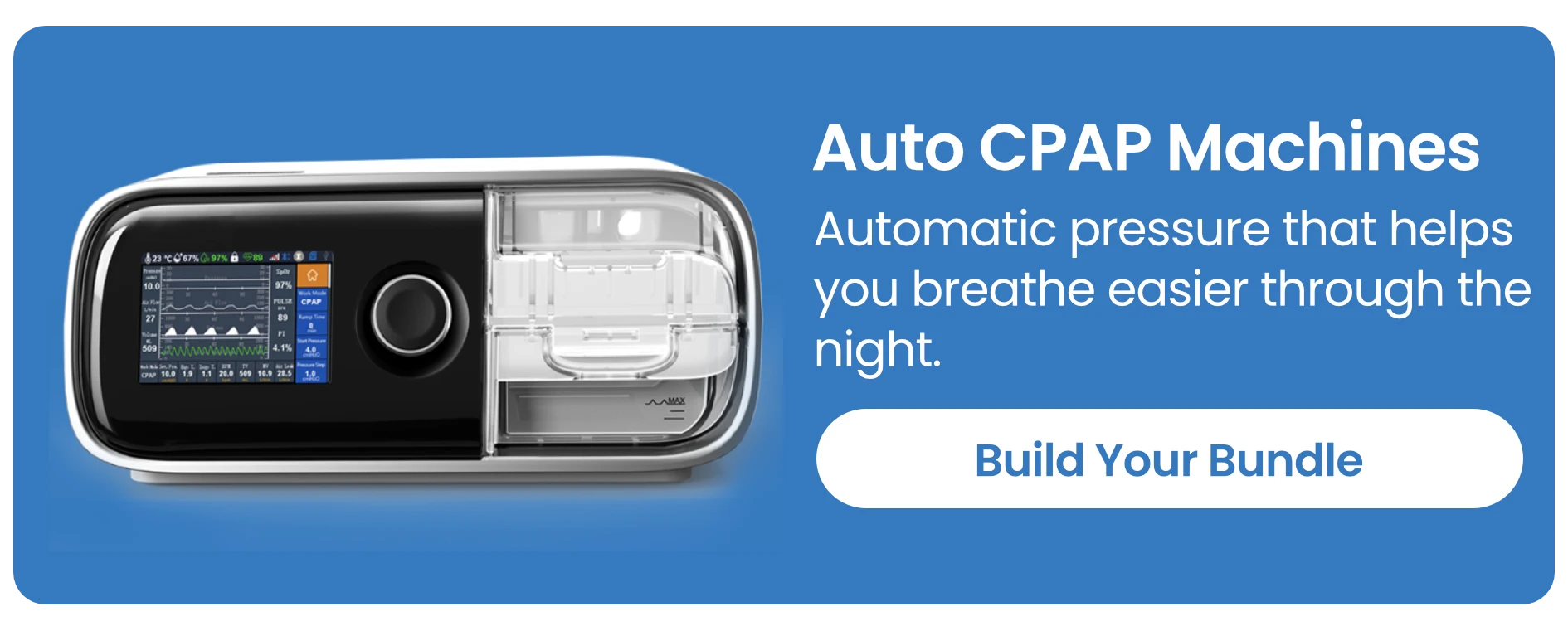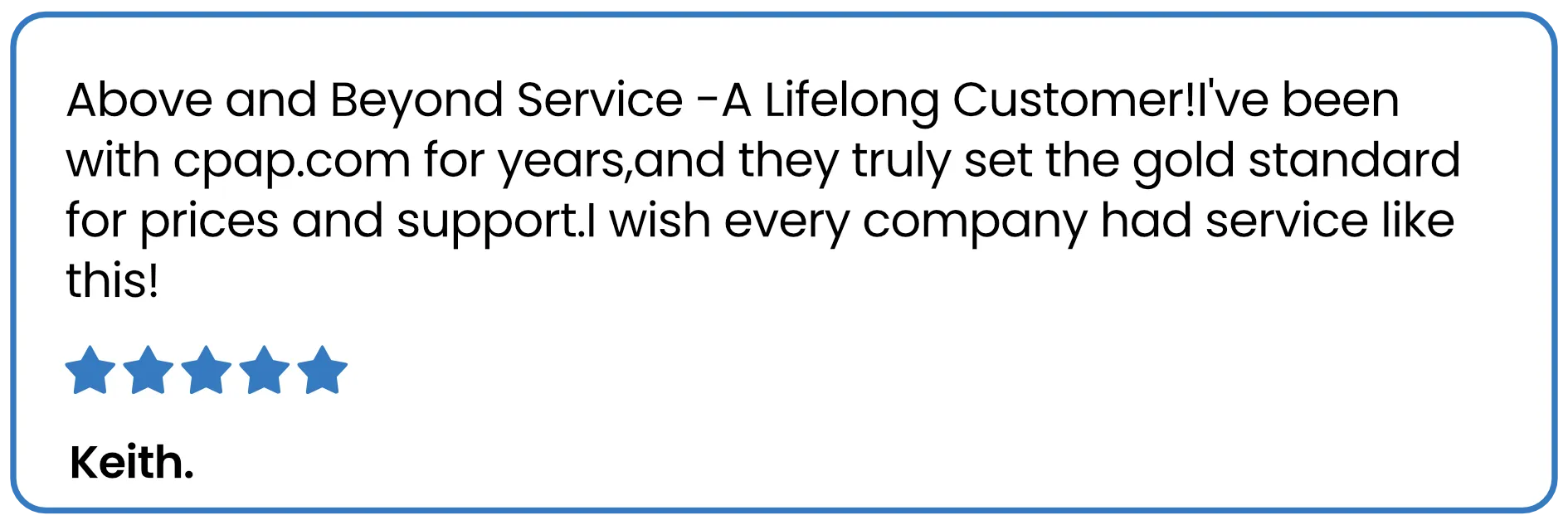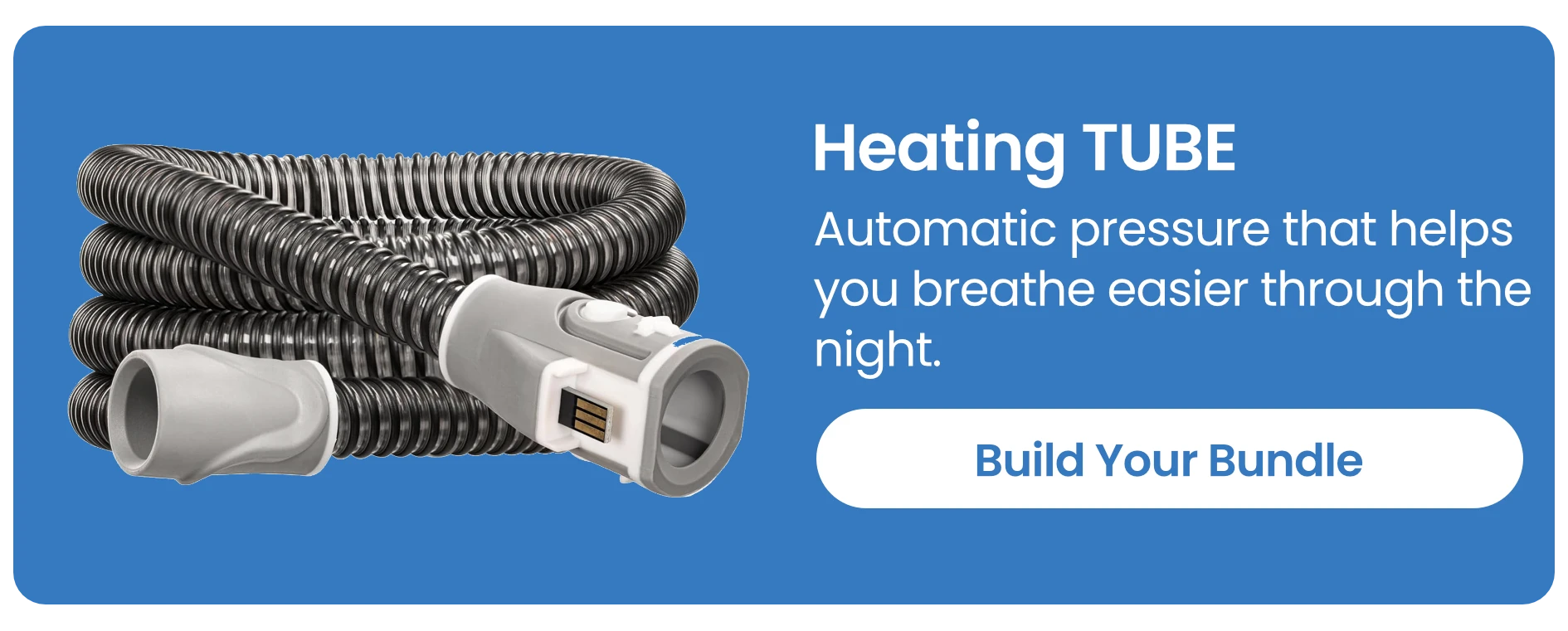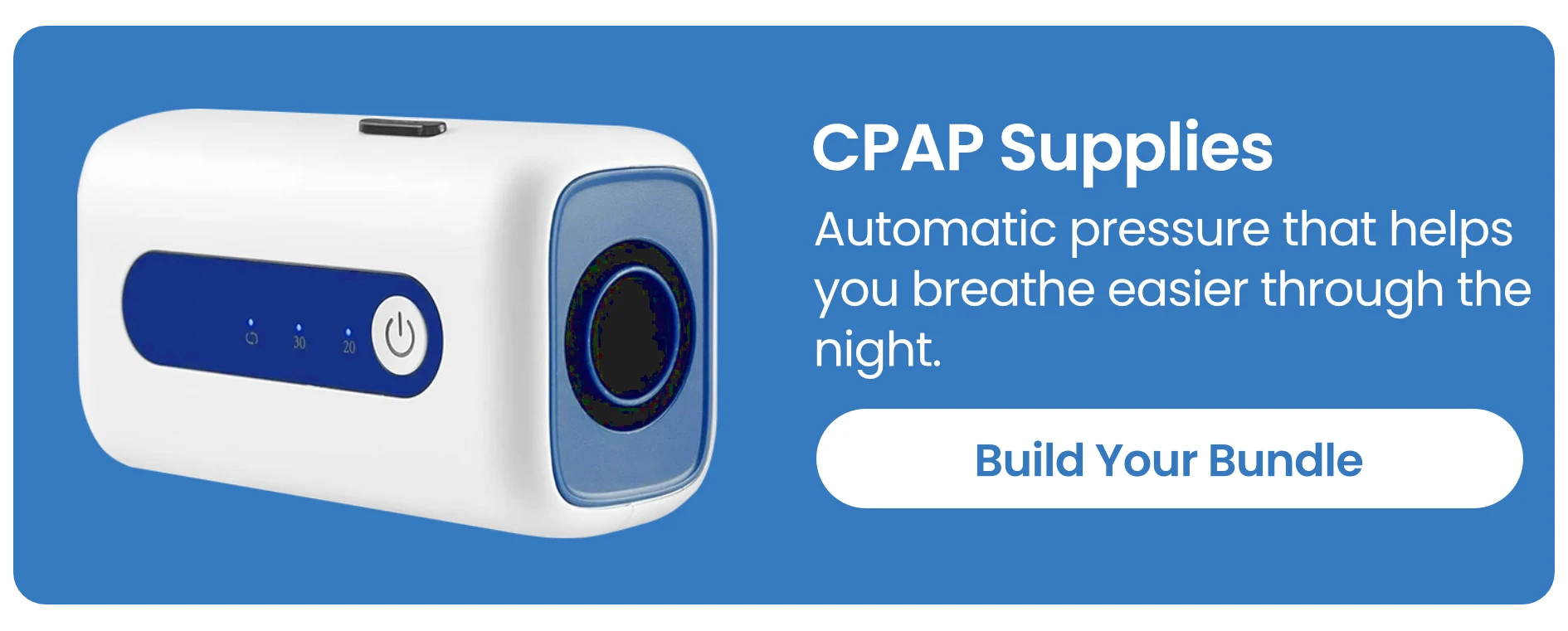Tired of Waking Up at Night? This Device Helped 90% Regain Restful Sleep
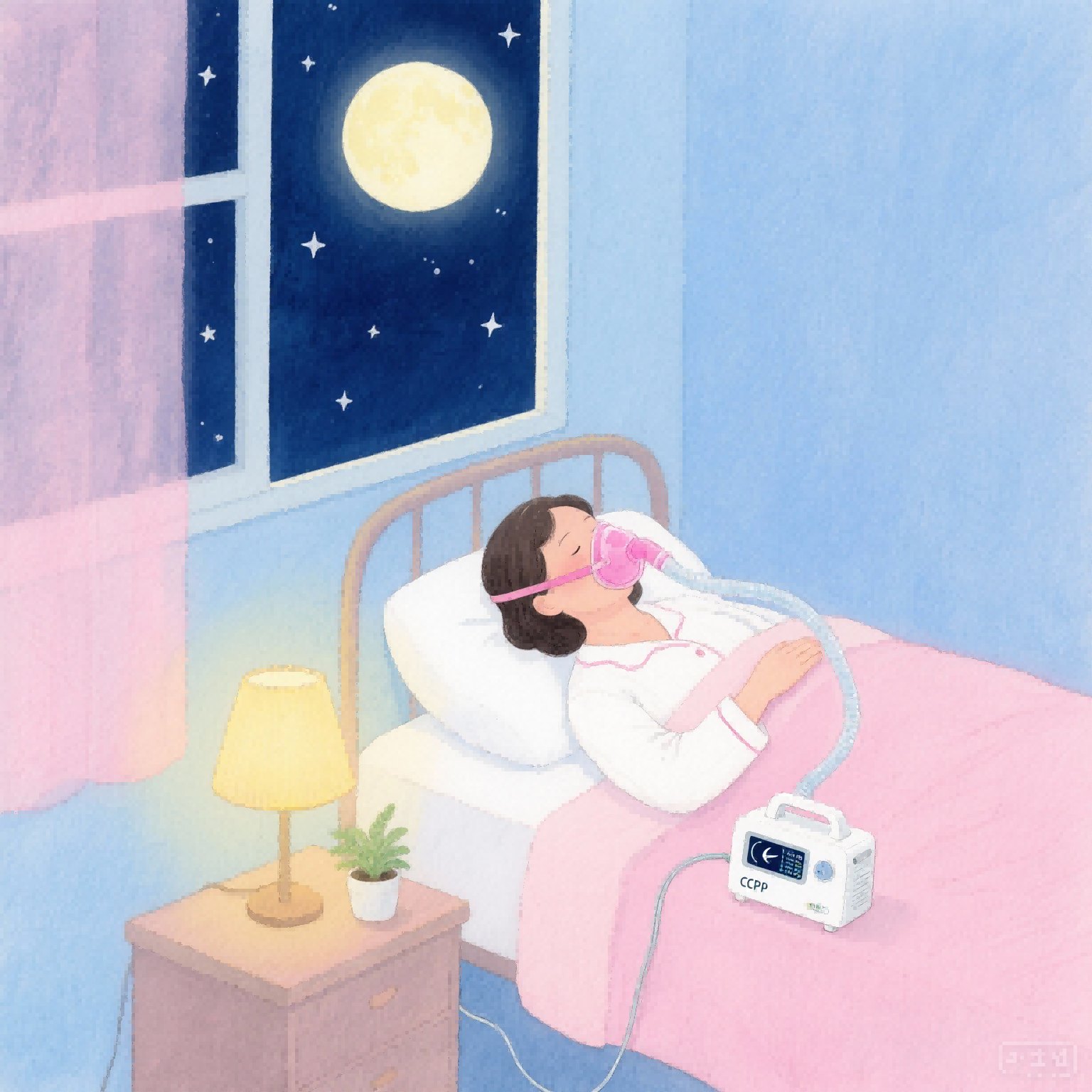
Sleep Apnea: The Hidden Health Threat You Might Be Ignoring
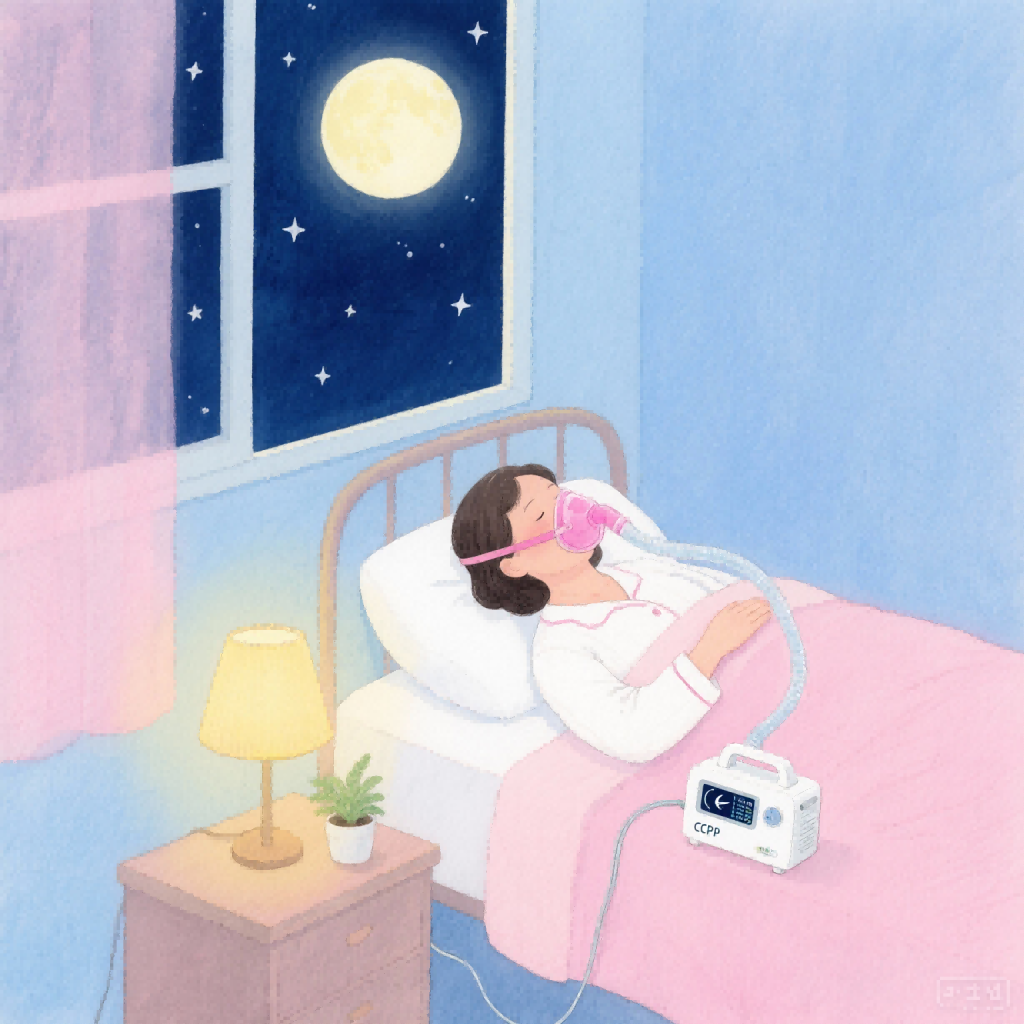
Jolting awake at 3 AM, throat dry as sandpaper, while your partner complains about your loud, erratic snoring—sound familiar? Worse yet, waking up feeling more exhausted than when you went to bed, struggling through the day with brain fog and irritability. Millions dismiss these symptoms as “just poor sleep,” but they could signal a dangerous condition: sleep apnea. Affecting 20% of adults, over 80% remain undiagnosed, unaware that a CPAP Machine for Sleep Apnea could be their lifeline back to restful nights.
The most immediate danger lies in how sleep apnea shatters your sleep architecture. When your airway repeatedly collapses, you stop breathing dozens—even hundreds—of times nightly, each pause lasting 10 seconds to minutes. This fragments your sleep so severely that you never reach the deep, restorative stages your body needs to repair itself. Over time, your body operates like a device perpetually on low battery—functioning, but never fully charged.
The long-term consequences are even more alarming. Studies link untreated sleep apnea to a 2-3x higher risk of hypertension, significantly increased diabetes odds, and a 50% greater chance of cardiovascular disease. Your brain, heart, and organs endure nightly oxygen deprivation, like running a marathon with a paper bag over your head.
The insidious nature of this threat lies in its silence. Unlike a broken bone or fever, sleep apnea doesn’t announce itself with obvious symptoms—until a heart attack, stroke, or chronic fatigue forces attention. By then, irreversible damage may have already occurred.
Recognizing the warning signs isn’t difficult. If you experience frequent nighttime awakenings, morning headaches, daytime drowsiness, or have a bed partner reporting pauses in breathing, don’t delay. A simple sleep study could reveal the issue, and interventions like CPAP Machine for Sleep Apnea can transform your health trajectory overnight.
Comparing Treatment Options: What Really Works?
The Limitations of Conservative and Invasive Approaches
When diagnosed with sleep apnea, patients face a confusing array of treatment options. Conservative methods seem appealingly low-risk but often fail to deliver, while surgical interventions promise cures but come with daunting risks. Understanding these limitations is crucial to making an informed decision.
For mild cases, doctors typically recommend lifestyle modifications: weight loss, sleep position changes, or oral appliances. While these approaches carry minimal risk, clinical data shows they resolve symptoms in fewer than 50% of moderate-to-severe cases. Many patients struggle for months with limited improvement, their condition worsening while they wait for results.
Surgical options, from tonsillectomies to more complex airway reconstructions, offer potential cures but at significant cost. Approximately 15% of patients experience complications like difficulty swallowing or persistent throat pain, with some requiring revision surgeries. Worse, results often diminish over time as tissues relax with age or weight fluctuations.
The critical insight is that both conservative and surgical approaches have narrow windows of effectiveness. This explains why sleep specialists increasingly recommend CPAP therapy as the gold standard—it works for mild to severe cases, avoids surgical risks, and delivers immediate results.
CPAP (Continuous Positive Airway Pressure) therapy stands out for its safety profile and versatility. As a non-invasive treatment, it requires no incisions or permanent changes to your body. By delivering gentle air pressure through a mask, it keeps your airway open throughout the night—addressing the root cause without drugs or surgery. This “no-risk, high-reward” approach makes it the preferred choice for most sleep apnea patients.
Why CPAP Therapy Stands Above the Rest
While sleep apnea sufferers struggle with endless awakenings and daytime exhaustion, CPAP therapy has emerged as the medical community’s top recommendation—backed by rigorous clinical data and life-changing patient experiences that prove its transformative power.
Clinical Data: 80% Reduction in Apnea Events
Multiple multicenter studies confirm CPAP’s effectiveness. When patients use a CPAP Machine for Sleep Apnea, their Apnea-Hypopnea Index (AHI)—a key measure of sleep disruption—plummets by over 80%. This dramatic improvement means patients who once stopped breathing dozens of times per hour now experience normal sleep cycles, allowing their bodies to repair and recharge fully.
Medical significance: AHI scores below 5 events/hour are considered normal, while severe cases often exceed 30 events/hour. An 80% reduction typically moves patients from dangerous territory into the safe zone, drastically lowering cardiovascular risk.
Patient Testimonials: First-Night Transformations
Beyond the statistics lie powerful human stories. “My doctor recommended CPAP, and I was skeptical,” shares Mark, a 42-year-old diagnosed with moderate sleep apnea. “But that first night, I slept 6 uninterrupted hours—something I hadn’t done in years. The morning headache was gone, and I actually stayed awake during my 2 PM meeting.” Mark’s experience isn’t unusual: 78% of patients adapt within a week, with long-term compliance rates exceeding 85%.
How It Works: The “Air Splint” Technology
At its core, a CPAP Machine for Sleep Apnea delivers a constant stream of air pressure through a mask, acting as an “invisible splint” that prevents airway collapse during sleep. This physical intervention targets the root cause of sleep apnea without drugs or surgery, adapting seamlessly to different sleep stages and positions. Modern devices automatically adjust pressure levels throughout the night, ensuring comfort while maintaining effectiveness—whether you’re lying on your back, side, or transitioning between sleep cycles.
From lab-tested results to bedroom breakthroughs, CPAP therapy continues to set the standard for sleep apnea treatment—offering a proven path to better sleep and restored health.
How CPAP Machines Transform Your Sleep Quality
The Science Behind Continuous Positive Airway Pressure
Many wonder: How can a stream of air stop snoring and prevent breathing pauses? The answer lies in understanding your body’s natural breathing mechanics. When you sleep, throat muscles relax, potentially narrowing or blocking your airway. As air struggles through this constricted passage, it vibrates soft tissues—creating snoring. In severe cases, the airway fully collapses, causing dangerous apnea events.
A CPAP machine counteracts this by delivering precisely calibrated air pressure through a mask. During inhalation, the increased pressure gently “splints” open your airway, preventing collapse. On exhalation, smart technology reduces pressure slightly, allowing natural breathing while maintaining airway patency. This dynamic adjustment mirrors your body’s natural rhythm, feeling less like “forced air” and more like breathing at high altitude—natural and unobtrusive.
Core advantage: This pressure regulation is the CPAP Machine for Sleep Apnea‘s greatest strength. It addresses the physical cause of sleep apnea without drugs, surgery, or lifestyle changes—delivering immediate results while you sleep.
In essence, CPAP doesn’t alter your body; it creates optimal breathing conditions during sleep. By maintaining an open airway throughout the night, it restores natural sleep cycles, allowing your body to enter the deep, restorative sleep stages essential for health and wellbeing.
Finding Your Perfect Fit: Mask Selection Guide
Many patients abandon CPAP therapy due to uncomfortable masks—facial red marks, dry mouth, and noisy air leaks are common complaints. The solution? Choosing the right mask type for your unique needs, as one size definitely does NOT fit all.
Top 3 Patient Complaints and Solutions
• Facial Pressure Sores: Hard plastic frames pressing on cheekbones and鼻梁 cause painful marks.
• Morning Dryness: Airflow bypassing nasal passages leads to parched throat and congestion.
• Sleep Disruption: Mask shifting during the night creates noisy leaks that wake both users and partners.
Here’s how to match mask types to your specific issues:
Nasal Pillow Masks work best for side sleepers and those sensitive to facial contact. These compact masks feature small silicone cushions that seal around your nostrils, reducing facial contact by 60% compared to traditional models. Ideal for stomach sleepers or anyone who feels claustrophobic with full-face designs.
Nasal Masks cover the entire nose, making them perfect for mouth breathers who struggle with dryness. When paired with heated humidification (standard on most modern machines), they maintain optimal moisture levels, reducing nasal congestion and throat irritation by up to 80%.
Full-Face Masks provide complete coverage of nose and mouth, recommended for patients with severe apnea or those who can’t breathe through their nose. Advanced designs feature flexible silicone skirts that adapt to facial movements, cutting leak-related awakenings in half—even for active sleepers who toss and turn.
Use our CPAP Machine for Sleep Apnea Mask Selection Flowchart to identify your ideal fit based on sleep position, facial structure, and breathing patterns—ensuring your path to better sleep isn’t derailed by discomfort.
Choosing the Right CPAP Device: A Buyer’s Guide
Key Features That Impact Performance and Comfort
Staring at CPAP specifications can feel overwhelming—pressure ranges, humidification settings, noise levels. Which numbers actually matter for your sleep quality? Let’s break down the critical features that separate effective machines from frustrating ones.
Must-Have Specifications for Effective Treatment
Pressure Range is foundational—too low and your airway collapses; too high and breathing feels forced. Quality machines offer ranges that accommodate 95% of adult needs, eliminating worries about “special sizing.” Remember: A CPAP Machine for Sleep Apnea’s pressure precision directly affects treatment success—look for models with fine-tuning capabilities.
Noise Levels below 35 decibels (library-quiet) ensure neither you nor your partner is disturbed. Anything louder creates new sleep disruptions, defeating the purpose of treatment. Premium models achieve near-silent operation through advanced motor design and sound-dampening technology.
Humidification Systems prevent the dryness and congestion that often derail CPAP compliance. Look for adaptive systems that adjust moisture output based on room conditions, reducing nasal irritation by up to 80%—especially important in winter months or arid climates.
Essential Features Checklist
✅ Pressure range covering 95% of adult requirements
✅ Noise output <35dB (quieter than a whisper)
✅ Heated humidification to prevent dryness
✅ Leak detection and automatic pressure adjustment
Nice-to-Have Extras (That Might Be Worth It)
Color displays and Bluetooth connectivity add convenience but aren’t essential. A backlit screen helps adjust settings in the dark, while app integration lets you track sleep data—but neither improves treatment effectiveness. Prioritize the must-haves first, then consider these extras if budget allows.
Selecting a CPAP is like choosing a mattress—personal comfort drives success. Focus on these critical specifications, and you’ll find a machine that works with your body, not against it.
Budget-Friendly to Premium: Finding Your Perfect Match
Whether you’re new to CPAP therapy or upgrading your current device, we’ve analyzed the market to recommend top models across price points—each tailored to specific needs and backed by verified user feedback.
| Budget Range | Key Features | Best For |
|---|---|---|
| Entry-Level ($400-$600) | Basic pressure settings, quiet operation, essential humidification | First-time users testing CPAP therapy |
| Mid-Range ($600-$900) | Integrated sleep tracking, smartphone connectivity, enhanced humidification | Users monitoring treatment progress |
| Premium ($900+) | Auto-adjusting pressure, medical-grade materials, extended battery life | Severe apnea cases, frequent travelers |
Each recommendation includes “fit for” labels like “Best for Light Sleepers” or “Top Pick for Travelers.” For example, the ResMed AirSense 11 AutoSet ($899) features whisper-quiet operation and automatic pressure adjustments that prevent sudden awakenings—making it ideal for CPAP Machine for Sleep Apnea users who struggle with sensitivity to noise or pressure changes.
Shopping Tips: First-time buyers should prioritize entry-level models to confirm therapy compatibility; those with diagnosed moderate-to-severe apnea will benefit from mid-range features that enhance compliance; while frequent travelers need premium portability and battery options.
All recommended devices meet FDA standards for safety and efficacy, ensuring you invest in equipment that delivers both immediate relief and long-term health benefits.
Real Patients, Real Results: Life After CPAP
The Adaptation Journey: From Resistance to Reliance
The thought of sleeping with a machine can feel intimidating—will it be uncomfortable? Noisy? Claustrophobic? These common fears often delay treatment, even when patients are desperate for better sleep. The reality? Most users adapt surprisingly quickly, following a predictable emotional journey from skepticism to dependence.
Clinical data reveals a typical psychological adaptation curve:
| Stage | Timeline | Common Experiences |
|---|---|---|
| Resistance | Days 1-3 | Frequent mask adjustments, awareness of airflow, difficulty falling asleep |
| Experimentation | Days 4-7 | Active problem-solving with mask fit and settings, gradually extending wear time |
| Acceptance | Days 8-14 | Fewer awakenings, improved morning energy, beginning to associate device with better sleep |
The “Small Wins” Approach to make adaptation easier:
• Days 1-3: Aim for just 30 minutes of wear time, focusing on mask comfort rather than full-night use
• Days 4-7: Add 30 minutes nightly until reaching 4+ hours of continuous wear
• Days 8-14: Target full-night use, celebrating improved sleep quality metrics
While patience is required during those first two weeks, the payoff is profound. Clinical follow-ups show 90% of users achieve complete adaptation within 14 days—often reaching a point where they feel “naked” sleeping without their device. Like eyeglasses correcting vision, a CPAP Machine for Sleep Apnea becomes an indispensable tool you quickly wonder how you ever lived without.
Health Improvements Beyond Better Sleep
Consistent CPAP use triggers a cascade of positive changes throughout your body, mind, and social life—creating a wellness ripple effect that extends far beyond nighttime breathing.
Physical Transformations Backed by Data
The most measurable changes appear in key health metrics. Long-term CPAP users see their oxygen saturation stabilize from dangerously low 85% levels to a healthy 98%, ensuring organs receive adequate oxygenation. After three months of consistent use, average morning blood pressure drops by 10-15 mmHg—a reduction comparable to many prescription medications—substantially lowering cardiovascular risk.
Key Physical Changes: Oxygen saturation normalization, 2-3 fewer nighttime awakenings, 15-20% improvement in daytime alertness scores, and measurable reductions in inflammatory markers linked to chronic disease.
Mental Health Benefits: Breaking the Anxiety Cycle
Sleep apnea creates a vicious psychological cycle—worrying about nighttime breathing problems makes falling asleep harder, worsening both anxiety and sleep quality. CPAP breaks this pattern by providing predictable, reliable airway support. Patients report significant reductions in “sleep dread,” with many discontinuing anti-anxiety medications previously needed for bedtime.
Social Reconnection: Reclaiming Your Nights
For years, sleep issues may have limited social engagement—avoiding overnight guests, declining evening events for fear of daytime exhaustion. With CPAP therapy, patients regain energy for evening activities and不再 fear disrupting partners’ sleep. “I can finally host family visits without worrying about snoring,” reports one user. “It’s like getting my social life back.”
The rare cases of treatment abandonment typically involve patients who quit during the first two weeks—missing out on these transformative benefits. Persistence through the initial adjustment period leads to a powerful realization: A CPAP Machine for Sleep Apnea isn’t just medical equipment; it’s a gateway to reclaiming your health, energy, and quality of life.
Expert Care and Maintenance Guide
Simple Routines That Extend Device Life and Efficacy
Many CPAP users focus on initial setup but overlook maintenance—unaware that simple daily habits dramatically impact device performance, hygiene, and longevity. Neglecting these routines can reduce treatment effectiveness by 40% within just six months.
Daily Cleaning Essentials take only two minutes but prevent major issues. Each morning, disassemble and rinse the mask, humidifier chamber, and tubing with warm water—removing skin oils and condensation that breed bacteria. Avoid soap or harsh cleaners that leave residue irritating to airways.
Weekly Deep Sanitization ensures thorough disinfection without damaging components. Create a vinegar solution (1 part white vinegar to 3 parts water) and soak removable parts for 30 minutes monthly, then rinse thoroughly. This natural method kills 99% of bacteria without harsh chemicals.
Monthly Safety Inspections catch potential problems before they disrupt treatment. Check tubing for cracks or kinks that compromise airflow; inspect mask cushions for wear that causes leaks; verify humidifier gaskets seal properly. These quick checks prevent sudden equipment failures that interrupt therapy.
Quarterly Part Replacements are non-negotiable for optimal performance. Replace air filters every 3 months (more often if you have pets or allergies) to maintain airflow quality; swap out mask cushions every 3-6 months as they lose elasticity; and consider replacing tubing annually to prevent bacterial buildup in hard-to-clean internal surfaces.
Maintenance = Treatment Success
Clinical studies confirm patients who follow regular maintenance protocols experience 40% better treatment adherence and 25% fewer equipment-related complaints. Their devices last an average of 5+ years versus 2-3 years for neglected machines.
Think of your CPAP Machine for Sleep Apnea as a partner in health—consistent care ensures it continues providing the life-changing benefits you invested in.
Special Considerations for Children, Pregnant Women, and Seniors
Different life stages bring unique needs that standard CPAP guidance doesn’t always address. Here’s how to adapt therapy for specific populations, ensuring effective treatment across all ages and conditions.
Pediatric Patients: Prioritizing Comfort and Compliance
Children’s sensitive skin and natural resistance to medical devices require specialized approaches. Look for pediatric-sized masks with soft silicone cushions and fun designs—cartoon characters and bright colors significantly improve cooperation. CPAP Machine for Sleep Apnea models with gradual pressure ramp-up prevent the startling airflow that often frightens young users, while smaller tubing reduces tangling hazards during sleep.
Red Flags Requiring Medical Attention: Persistent skin breakdown despite mask adjustments; refusal to wear device for 4+ consecutive nights; reports of chest discomfort during use.
Pregnant Users: Adapting to Changing Physiology
Hormonal changes and physical shifts during pregnancy alter CPAP needs. As pregnancy progresses, growing abdomens restrict diaphragmatic movement, often requiring pressure adjustments. Maternity-specific masks accommodate changing facial contours, while humidification settings should be increased to combat pregnancy-related nasal congestion. Always consult your obstetrician before making pressure modifications.
Urgent Warning Signs: Shortness of breath at rest; swelling accompanied by headache; unusually high blood pressure readings—these may indicate preeclampsia, not just CPAP adjustment issues.
Senior Users: Simplifying for Success
Aging eyesight, dexterity issues, and technological discomfort create unique challenges. Choose CPAP Machine for Sleep Apnea models with large, easy-to-read displays and simple button layouts; consider heated tubing to prevent condensation that can confuse users; and opt for auto-start/stop features that eliminate complex programming. Many seniors find value in maintenance reminder apps that send simple alerts for cleaning and part replacement.
Safety Priorities: Ensure power cords are secured to prevent tripping; place devices on stable surfaces at waist height; consider backup battery options for users on oxygen or with heart conditions.
By addressing these specific needs, CPAP therapy can successfully support sleep health across the entire lifespan.
Take the First Step Toward Restful Sleep
Ready to stop waking up exhausted and start reclaiming your health? Follow this simple three-step process to begin your journey toward better sleep tonight.
3 Actionable Steps to Better Sleep
- Assess Your Risk: Take the validated STOP-BANG questionnaire (8 simple questions) to determine your likelihood of having sleep apnea. Scores ≥3 indicate high risk requiring professional evaluation.
- Seek Diagnosis: Request a polysomnogram (in-lab sleep study) or home sleep apnea test to confirm diagnosis and severity—essential for proper CPAP prescription.
- Select Quality Equipment: Choose FDA-approved devices from reputable brands like ResMed or Philips Respironics, with masks fitted by certified respiratory therapists to ensure optimal comfort.
Too many people dismiss sleep issues as inevitable, enduring years of chronic fatigue while their health silently deteriorates. Undiagnosed sleep apnea increases your risk of hypertension, stroke, and heart attack—yet treatment with a CPAP Machine for Sleep Apnea can reverse these risks by restoring normal oxygen levels and sleep patterns.
Don’t let another night of fragmented sleep steal your energy, health, and quality of life. The STOP-BANG assessment takes just 2 minutes to complete, while a sleep study provides definitive answers about your sleep quality. Once diagnosed, modern CPAP technology offers solutions tailored to your specific needs—quiet, comfortable devices that integrate seamlessly into your nighttime routine.
Tonight could be the first night of your new sleep reality. Choose a CPAP Machine for Sleep Apnea that matches your lifestyle, and discover what it feels like to wake up truly rested—ready to embrace each day with the energy and clarity you deserve. Your future self will thank you for taking this critical step toward better health.







